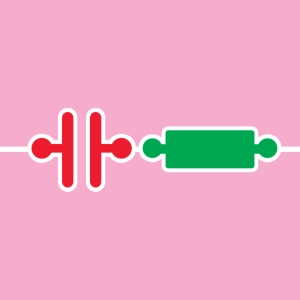 RC Circuit - transient response
RC Circuit - transient response
Resistance (R), capacitance (C) and inductance (L) are the basic components of linear circuits. The behavior of a circuit composed of only these elements is modeled by differential equations with constant coefficients.
The study of an RC circuit requires the solution of a differential equation of the first order. For this reason, the system is called a circuit of the first order.
For this RC series circuit, the switch can simulate the application of a voltage step (E = 5V) causing the capacitor to store energy. The capacitor is initially uncharged, but starts to charge when the switch is closed on the 5V source. When the switch is returned to the zero-input position, the capacitor releases the stored energy and discharges through the resistor.
A simple mesh equation establishes the law that governs the evolution of the charge q(t) (charge on the capacitor):
dq/dt + q/RC = E/R
Solving a differential equation always results in two types of solutions:
- The transient (free) state, solution of the differential equation without a second member:
dq/dt + q/RC = 0.
- The steady state, particular solution of the differential equation with second member:
dq/dt + q/RC = E/R.
The response of the circuit (full solution) is the sum of these two individual solutions:
i(t) = CE + K.e(-t/RC)
The solution of a differential equation of the first order is always exponential in nature.
